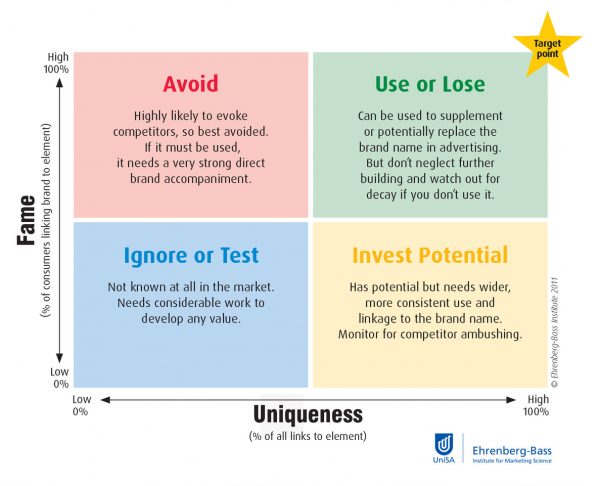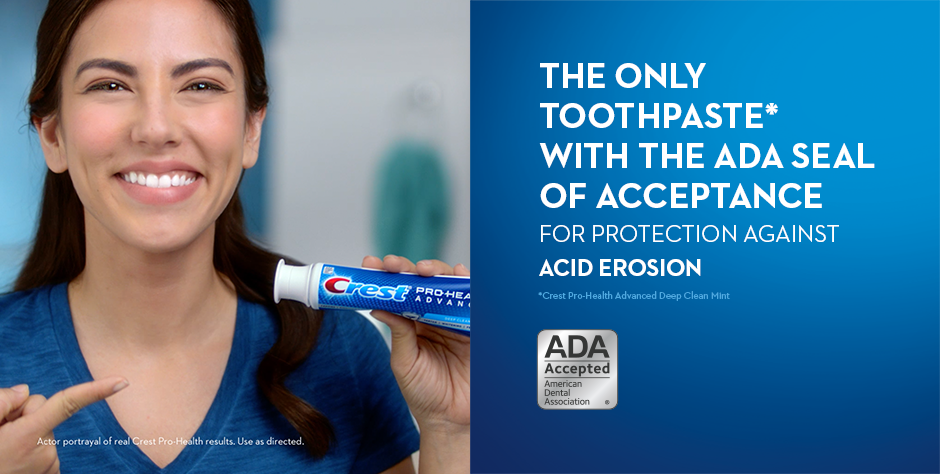Since the inception of the concept of brand, identification has been integral to its role for business. In fact, the need for a product to be identified from a range of related products was fundamental to the growth of the practice of branding. In our modern world, where ‘brand’ has evolved to become a multi-layered and complex entity, the need to be identified by your target audience remains essential.
There are many ways that people might be able to identify your brand; symbols, logo, colors, tagline, sound, character, celebrity, shapes, tone-of-voice. All of these things are brand elements, which together create part of your brand.
For a brand element to become a Distinctive Brand Asset it needs to:
- Be unique and distinctive – the element must make your target audience think of your brand, and not your competitors.
- Stand out – attract attention of your target audience and stand out from the crowd.
- Be well-known – enough of your target audience must associate the brand element with your business to make it a valuable asset.
Why Are They Important?
You might have an advertising campaign that generates a huge amount of attention, or a piece of social content which has a phenomenal number of views. However, if the audience are unable to identify the advertisement or the content as being related to your brand then all of the attention or views are worthless to your business. Distinctive brand assets create an immediate connection to, and reference of, your brand.
Their value isn’t so much in the assets themselves, but in what they bring to mind for your audience and what people associate them with. It is the associated meaning of your brand that encourages action – but it is the assets that act as the trigger for this meaning.
Strong distinctive brand assets act as invaluable shorthand for your brand – acting as a cue for people to bring all their previous experiences and associated meaning to mind.
How Do You Use Them?
Distinctive brand assets should be used across every communication channel, identifying those best suited to each channel’s key function. For example, products may use an identifiable sound (think of an Apple Mac turning on), whereas packaging could use a recognizable shape (the Coca Cola bottle is an obvious example). These are very famous examples, but the point remains for every brand – a coherent use and application across all brand channels will help your audience to associate every piece of communication as coming from the same brand.
“When brand owners ask me what market research they should be doing, I always reply ‘first measure your brand’s distinctive assets… Find out what they really are and how strong they really are… Don’t assume.’” ~ Professor Byron Sharp
The Ehrenberg-Bass Institute for Marketing Science recommends that if you are planning any evolution of your branding, or intend to do any new advertising, then you should benchmark your distinctive brand assets – what’s working and what isn’t.
By auditing existing brand elements, as well as undertaking research with your target audience on your brand, market and competitors, you can assess how healthy your brand elements are right now. Does your audience associate the color you currently use with you or with a competitor? Is your logo identifiable and memorable? Does your tagline aid identification of your brand at all?
External research is essential, as people working internally are surrounded by your brand elements on a daily, if not hourly, basis. What internal people think is associated to your brand is an extremely biased opinion – one you shouldn’t be basing any future branding or marketing decisions on. Unless you plan on only marketing to yourselves, you need to research your target audiences’ perception of your brand assets.
Can You Measure Them?
The Ehrenberg-Bass Institute for Marketing Science created a Distinctive Asset Grid, in which the various assets can be placed to give guidance on their relative merits and weaknesses, and how best to develop or improve them.

Uniqueness Aids Distinctiveness
To maximize the potential of your brand elements being distinctive, they should be as unique as possible. There are many ways your brand elements can be unique, but some of the most important are:
- Typography – by creating a bespoke typeface, you’ll be the only business using it and therefore increase your chances of your brand being recognized. A recent example of this is the typeface created for Channel 4 in the UK, which has a distinctive appearance and also a stylistic element which reflects the rest of the Channel 4 visual brand. (their logo pictured)
- Bespoke Imagery – stock photography is often used by businesses, of all sizes, but it has two major failings. The first is the lack of exclusivity. Unless purchased outright (which is very expensive) a stock photo can be used by any other business at the same time as you. The second failing is a lack of control over imagery style. Photographs can be selected, but you have very little control over the style of the image. By creating your own bespoke photography you have full control over the style of photography, and so can create a style with a photographer which best suits and reflects your brand. You also have a suite of imagery that no other business will ever be able to use, and is fully ownable and protectable.
- Logo – a logo is the signature for your brand. As such, it needs to be unique and identifiable. By crafting a distinctive logo you create a mark which is exclusively yours, and which reflects your character.
Always Use Protection
Finally, having spent considerable time, effort, and money on creating and developing these assets, protect them. The are extremely valuable, not only in their importance to brand recognition but as a part of the intangible assets of your business, which on average account for 61% of global enterprise value (2018 value of the world’s 13,000 largest companies – source: T2 analysis of S&P Capital IQ data for publicly-traded, non-financial companies with revenues over $50MM).
The type of protection you need will vary. From Intellectual Property, to trademarks, to copyright, to patents – whatever the right type of protection is it is vital that these elements which are so identifiably yours are protected as such.
Here’s more guidance on protecting brand assets.
Contributed to Branding Strategy Insider by: Paul Bailey, Strategy Director at We Launch
The Blake Project Can Help You Grow: The Brand Growth Strategy Workshop
Branding Strategy Insider is a service of The Blake Project: A strategic brand consultancy specializing in Brand Research, Brand Strategy, Brand Growth and Brand Education




